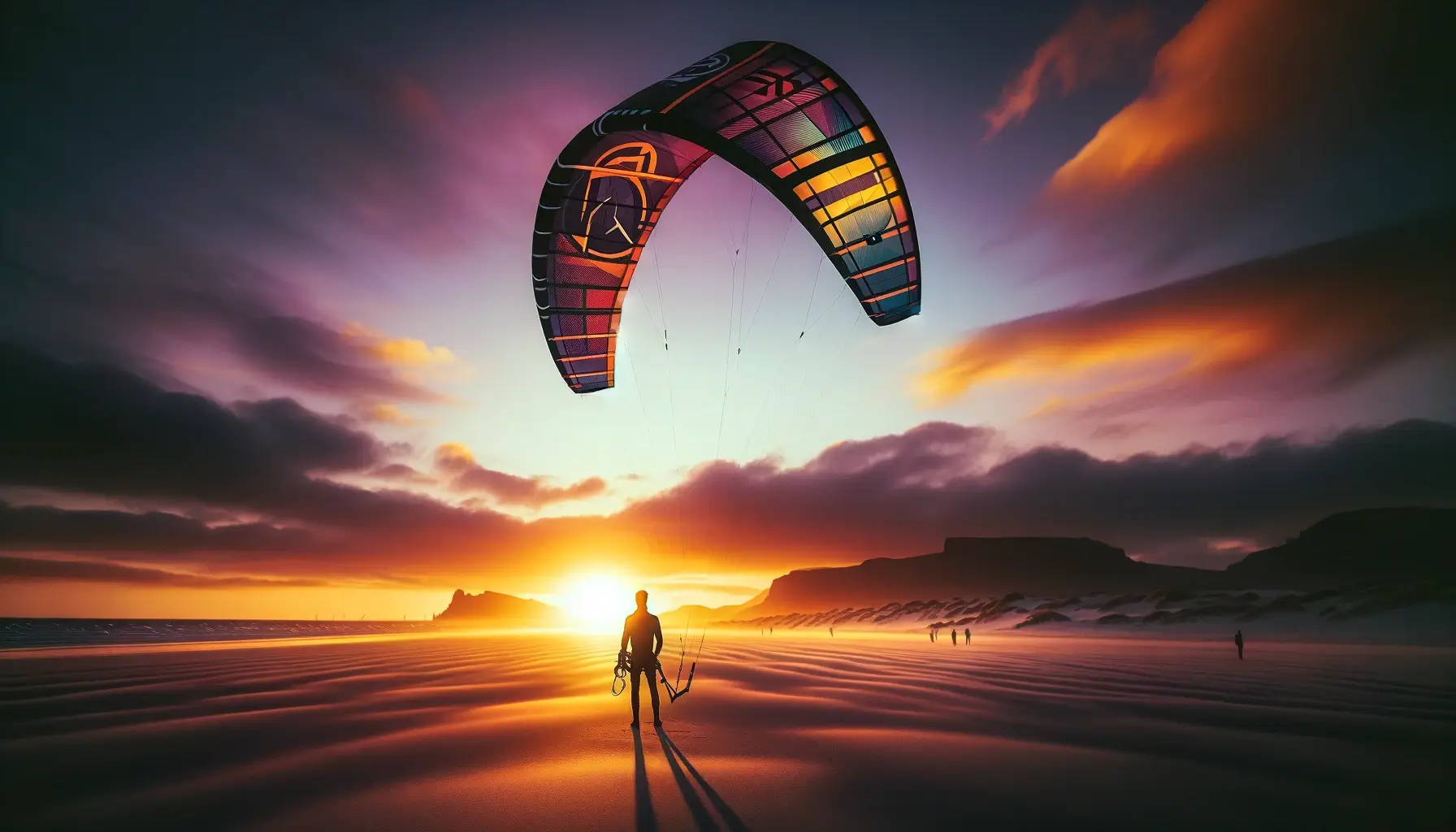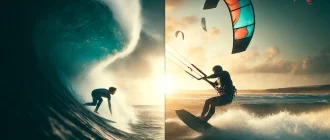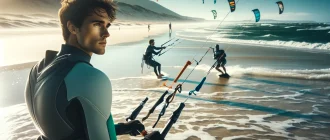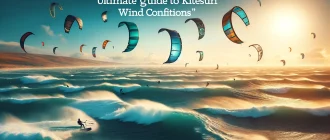What are the best kiteboarding kites? This is the question we tackle head-on, identifying which kites soar in performance, user-friendliness, and quality for every level of rider.
In this focused guide, we zero in on what are the best kiteboarding kites that deliver on the water, the features that define kitesurfing kites for them, and the leading brands that have earned the trust of the kiteboarding community. Prepare to have a clear picture of what your next kite choice should be, tailored to enhance your kiteboarding experience.
Essential Insights
- When selecting a kite, it’s critical to consider key features such as wind range, stability, control, and easy relaunch. Bow, delta, and hybrid kites are notably beginner-friendly with excellent relaunch capabilities.
- Reputable brands such as Duotone, Cabrinha, and North offer a variety of kites tailored for different skill levels and styles. Models like the Duotone Rebel SLS, Cabrinha Switchblade, and North Orbit are lauded for their specific performance traits, including stability and wind range.
- Buying your first kiteboarding kite involves assessing new versus used options, appropriate sizing based on weight and wind conditions, and purchasing from trusted sources. Proper care, including regular inspections and dry storage, is essential to maintain the kite’s performance and longevity.
Understanding the Key Features of Top Kiteboarding Kites
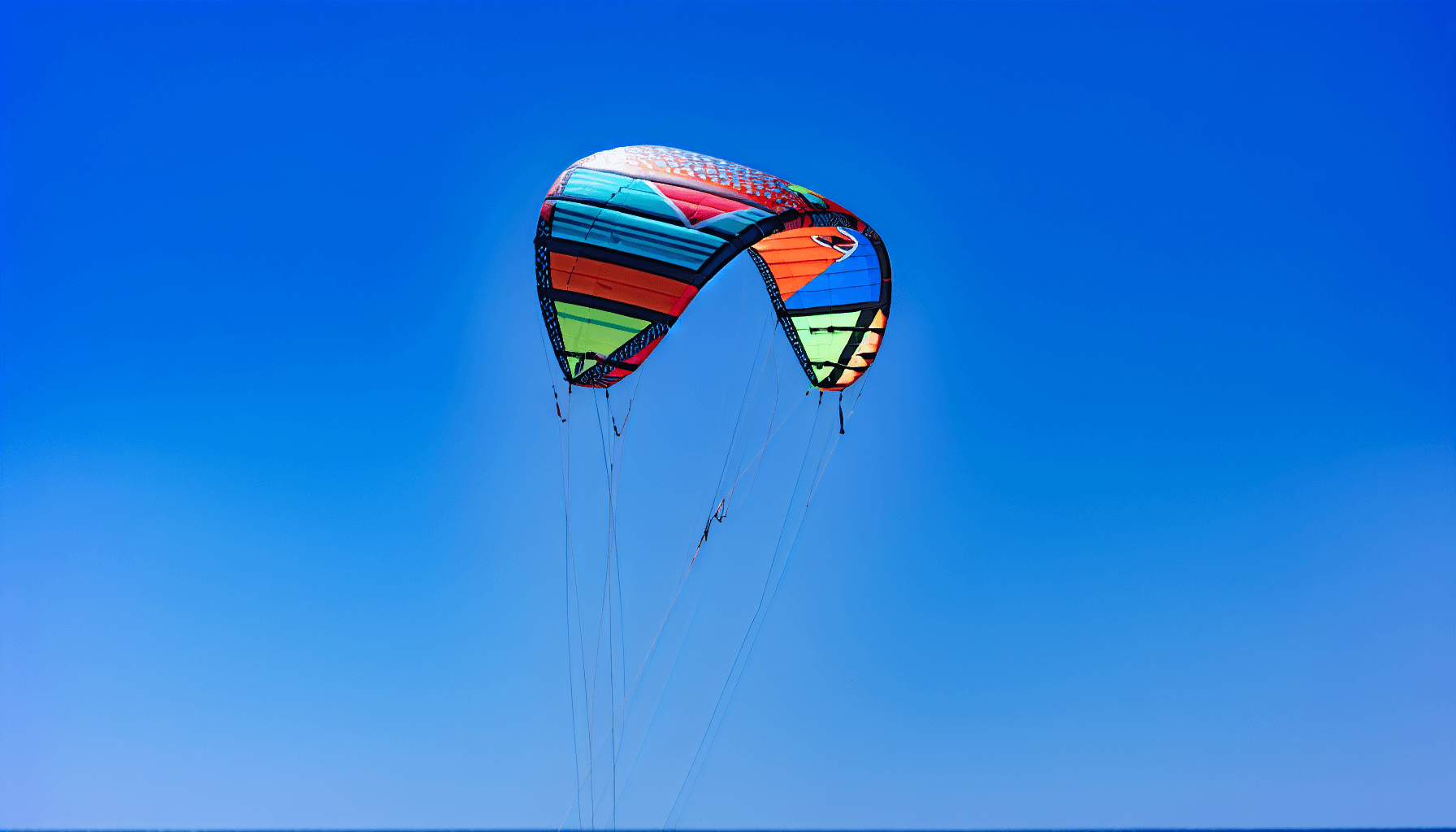
Selecting the best kiteboarding kite is like choosing a dance partner. It must match your rhythm, respond to your moves, and carry you through the performance with grace and power.
The key features you should look for include a wide wind range, stability, control, and easy relaunch capability.
Wind Range and Performance
The wind range of a kite refers to its ability to perform in different wind conditions. For instance, a kite with a giant or extensive large wind range performs optimally in light and high winds, offering versatility and adaptability. Remember, as the huge wind range and power increases, so does the speed, force, and excitement of your kiteboarding experience!
Kiteboarders generally require a minimum of 12mph to start riding. However, this can vary depending on the average rider’s weight. Lighter riders may need less, while heavier riders require the average rider to travel around 15mph. Mid-range kites, operated in wind conditions of about 16 to 21 miles per hour, are ideal for learning the sport of kiteboarding for many beginners.
Stability and Control
Stability and control are two sibling features that work hand-in-hand. A stable kite remains steady and does not rotate or drift uncontrollably in flight, ensuring a consistent performance in various wind conditions. This enhances the rider’s control, making maneuvering the kite and executing tricks easier.
Models such as the Contra kite are designed to:
- Maintain a steady position in the wind window
- Provide a smooth, consistent drive
- Enhance control during varied kiteboarding conditions such as light winds and wave riding.
This makes them ideal for both beginners and experienced riders alike.
Easy Relaunch and Safety
Have you ever wondered what happens when a forgiving kite crashes into waves or the water? The ability to quickly relaunch it is a critical safety feature, especially for beginners or in challenging surf conditions.
Bow kites, delta, kitesurfing, kitesurfing, and hybrid-type kitesurfing kites are known for their excellent ability to relaunch, making them popular among kite enthusiasts. This feature lets them quickly get back into the air after crashing, providing a seamless and enjoyable flying experience.
Kite manufacturers prioritize materials and designs that offer lighter kites, making them easier to relaunch. Specific kite shapes like a bow and delta-shaped tips are engineered to enhance this feature.
Additionally, an intuitive quick-release system with a lightweight frame is safer for beginners due to its ease of activation.
Top Kiteboarding Brands and Their Best Kites
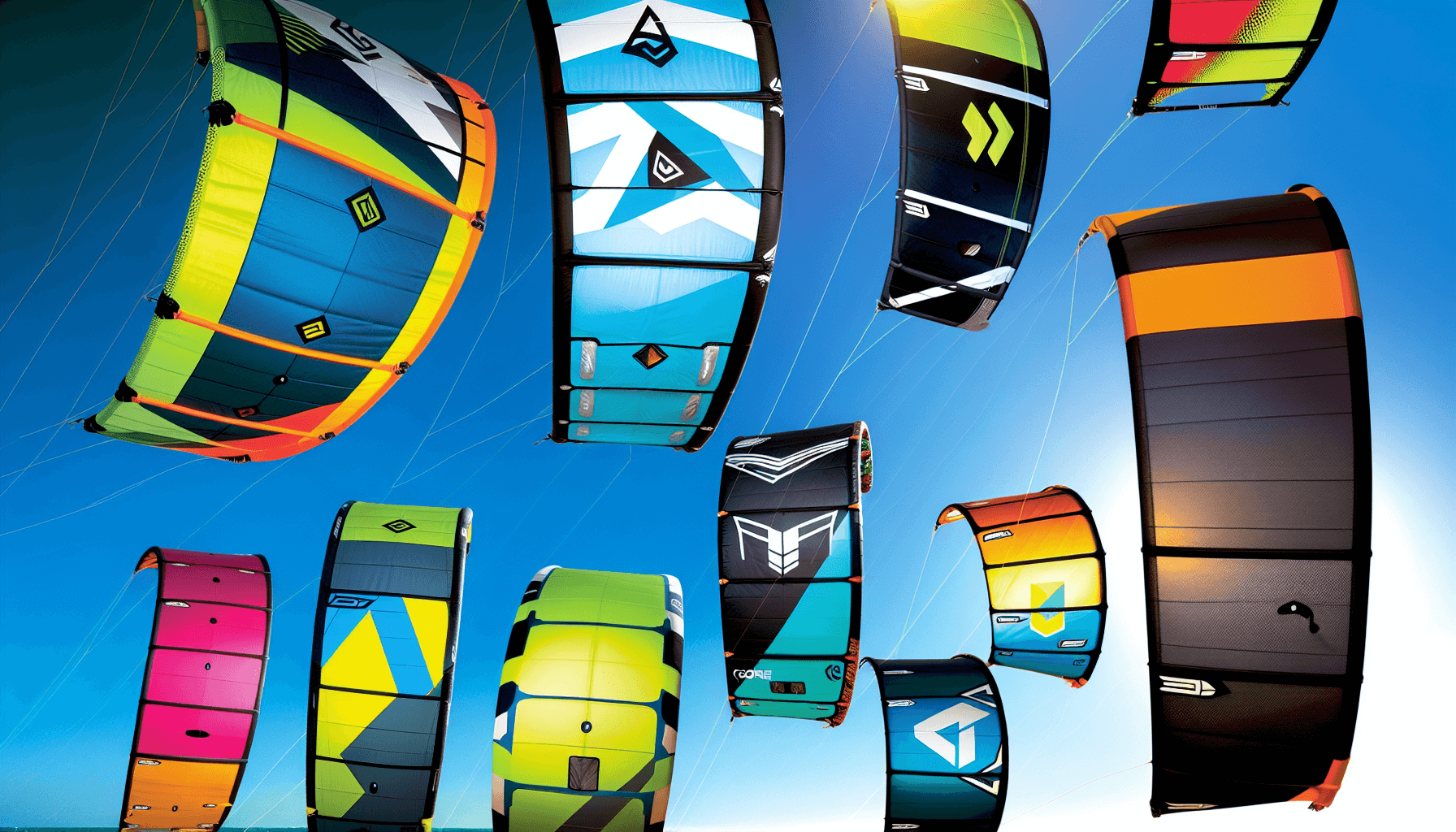
While numerous kiteboarding brands exist, some have earned a reputation for consistently delivering top-notch kites. These leading brands include:
- Duotone
- Cabrinha
- Core
- F-One
- Ozone
- Naish
- Slingshot
Each brand offers a stable brand of good kites tailored to different rider levels and styles, ensuring high-quality performance from their kite designers.
Duotone Kites
Duotone is a forgiving kite and brand synonymous with versatility and quality. Their range of kites is tailored to diverse styles of kiteboarding, from freestyle to wave riding. The construction of Duotone kites involves the leading edge edges and a specific number of struts to enhance stability, wind range, and turning behavior.
The Rebel SLS and Evo are two acclaimed freeride kites from Duotone that cater to different rider levels and freeride ride styles. They are distinguished as versatile kite by extended hangtime, considerable wind range, and stable and efficient upwind freeride performance.
For freestyle board enthusiasts, the Duotone Vegas is a board most celebrated for enabling high pop and providing the board a bit of slack, crucial for unhooked jumps and kiteboard loops.
Duotone’s Neo SLS and Neo kites stand out as surfers, with quick turning and stability, maintaining performance even when depowered for wave riding, beach, surfing, surfing, and surfing alone.
Cabrinha Kites
Cabrinha creates versatile and high-performance sport kites, including the popular Switchblade and Drifter sports and models, making them a favorite among beginners and experienced sports and riders. The Moto model sport stands out for its rapid response and power, which is ideal for high-wind situations and sports and riders who enjoy jumping and looping.
Cabrinha kites such as the Contra and Moto offer varying turning styles, with the Contra designed for pivotal turning and the Moto for delivering powerful turns. This variety caters to riders with different preferences, ensuring a Cabrinha kite for every style.
North Kiteboarding Kites
North Kiteboarding brings to the table a blend of innovation and high performance. In 2022, the North Orbit’s construction featured lighter components, enhancing its responsiveness and extensive air capabilities. Similarly, enhancements to the Carve include weight reductions and a new Active Load Distribution Bridle, optimizing its turning speed, depower, drift, and wave drifting performance.
North’s Reach kite, with its leading-edge on-edge shape and three-strut design, is distinguished by:
- Adaptability to various riding styles
- Robust low-end range
- Quick, agile turning
This makes the new version of the great kite a versatile and fun option for casual and severe kiteboarders.
Top Kiteboarding Kites by Leading Brands (2024 Overview)
This table provides an overview of popular kiteboarding kites from renowned manufacturers, highlighting their suitability for various skill levels and disciplines within the sport.
| Brand | Kite Model | Kite Type | Skill Level | Best For |
|---|---|---|---|---|
| Duotone | Evo | Freeride/Freestyle | Beginner-Expert | All-around performance |
| Cabrinha | Switchblade | Freeride | Beginner-Expert | Versatility and ease of use |
| Core | XR6 | Freeride/Big Air | Intermediate-Expert | Big air and freeride |
| F-One | Bandit | Freeride/Wave | Beginner-Expert | Wave riding and freeride |
| Ozone | Enduro V3 | Freeride/Freestyle/Wave | Beginner-Expert | Versatility in all conditions |
| Naish | Pivot | Freeride/Wave | Beginner-Expert | Wave riding and overall performance |
| Slingshot | RPM | Freestyle | Intermediate-Expert | Freestyle and wake-style |
Choosing the Ideal Kiteboarding Kite for Your Skill Level and Style
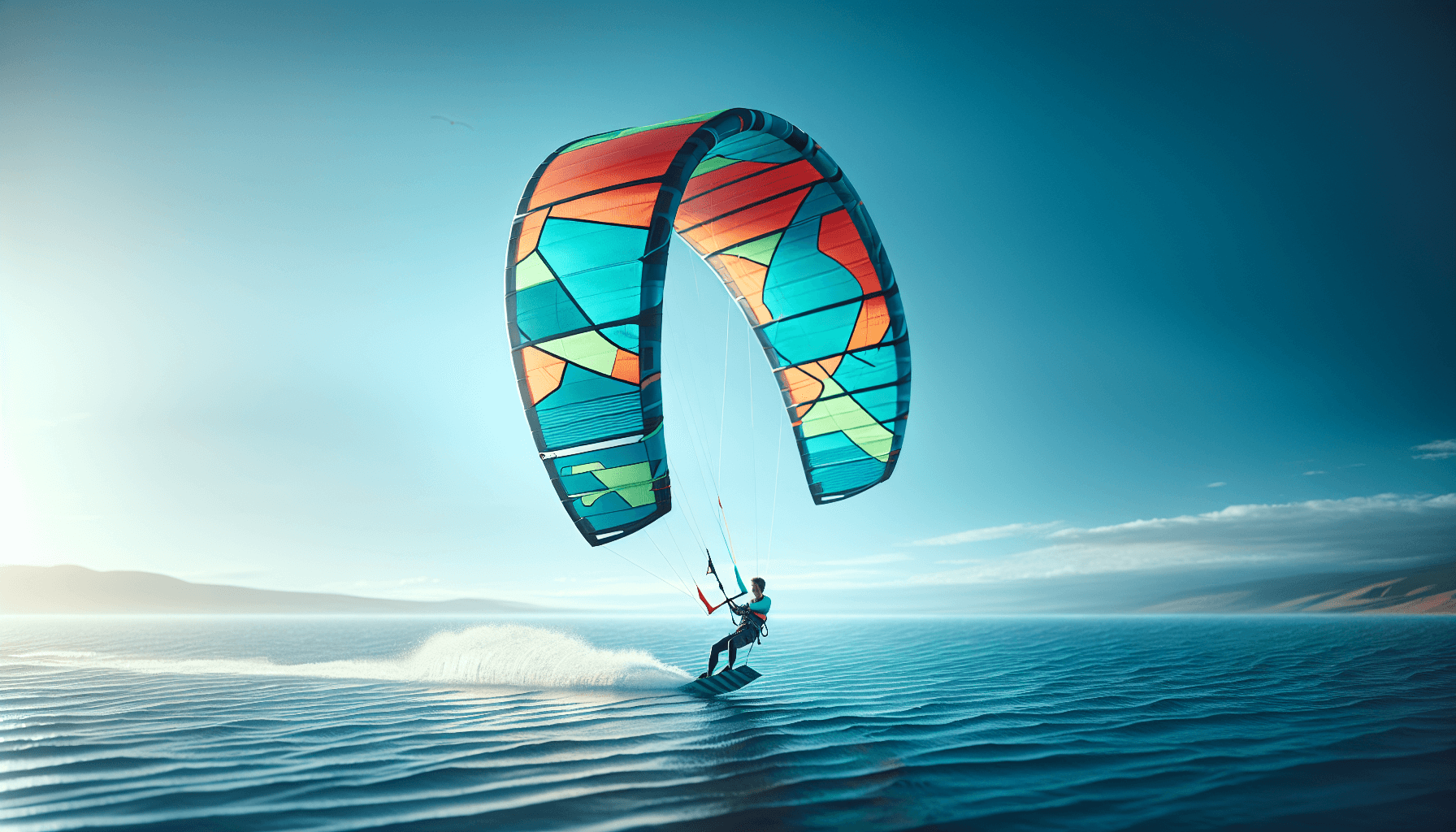
Choosing the ideal kite isn’t as simple as picking the most colorful one on the market. It’s a balance between your skill level, the style of kiteboarding you prefer, and the kite’s safety and performance features.
Beginner-Friendly Kites
As a beginner, your first kite, the first kite to fly, should be a brand of kite, first kites that should offer one of the following:
- A reliable safety release mechanism
- On-demand depower
- Easy relaunch
- A wide wind range
- Stability to ensure both safety and a more accessible learning process.
Recommended beginner kite options include:
- Cabrinha Switchblade: known for its stability and ease of use
- Duotone Evo and Neo: entry-level options with steady flying characteristics
- Airush One v2: offers steady flying and easy relaunch
- HQ4 Fluxx: known for its steady flying characteristics and relaunch ease.
Additionally, the kite size should also be considered relative to the wind conditions; more giant kites for light winds can be less responsive, while smaller kites in strong winds can be more challenging due to their faster behavior.
Intermediate and Advanced Kites
As you fly and ride big air, you become more experienced, and your skill level in the big air and show increases, more power, and your kite needs to keep up. Kites like the Reedin SuperModel v3 and Eleveight RS V6 offer precise steering and power control, ideal for advanced riders executing a variety of styles of big air shows.
Considerations for seasoned riders include:
- The kite’s ability to boost and loft well, translating to vertical motion and hangtime
- Advanced riders often prefer high-aspect, symmetrical kites like C-kites for their upwind speed and ability to execute long, lofty jumps.
- Hybrid-shaped kites blend the advantages of bow and C-shaped kites, though characteristics can vary significantly among designs.
Wave Riding and Freestyle Kites
Wave kite riding and freestyle kitesurfing, including wave kite designs, are tailored to the needs of these riding styles, with specific features such as sudden depower and control in varied wind conditions, perfect for riding waves.
For instance, the 2023 Naish S27 Boxer Kiteboarding Kite offers excellent steering response and power control suitable for experienced riders and for wave riding. The Eleveight RS+ V1 Kite is part of one of the few years of the Cross Over Freeride Series that caters to riders demanding high performance for both wave riding and freestyle board maneuvers, exemplifying kites designed with versatility in mind.
Tips for Buying Your First Kiteboarding Kite
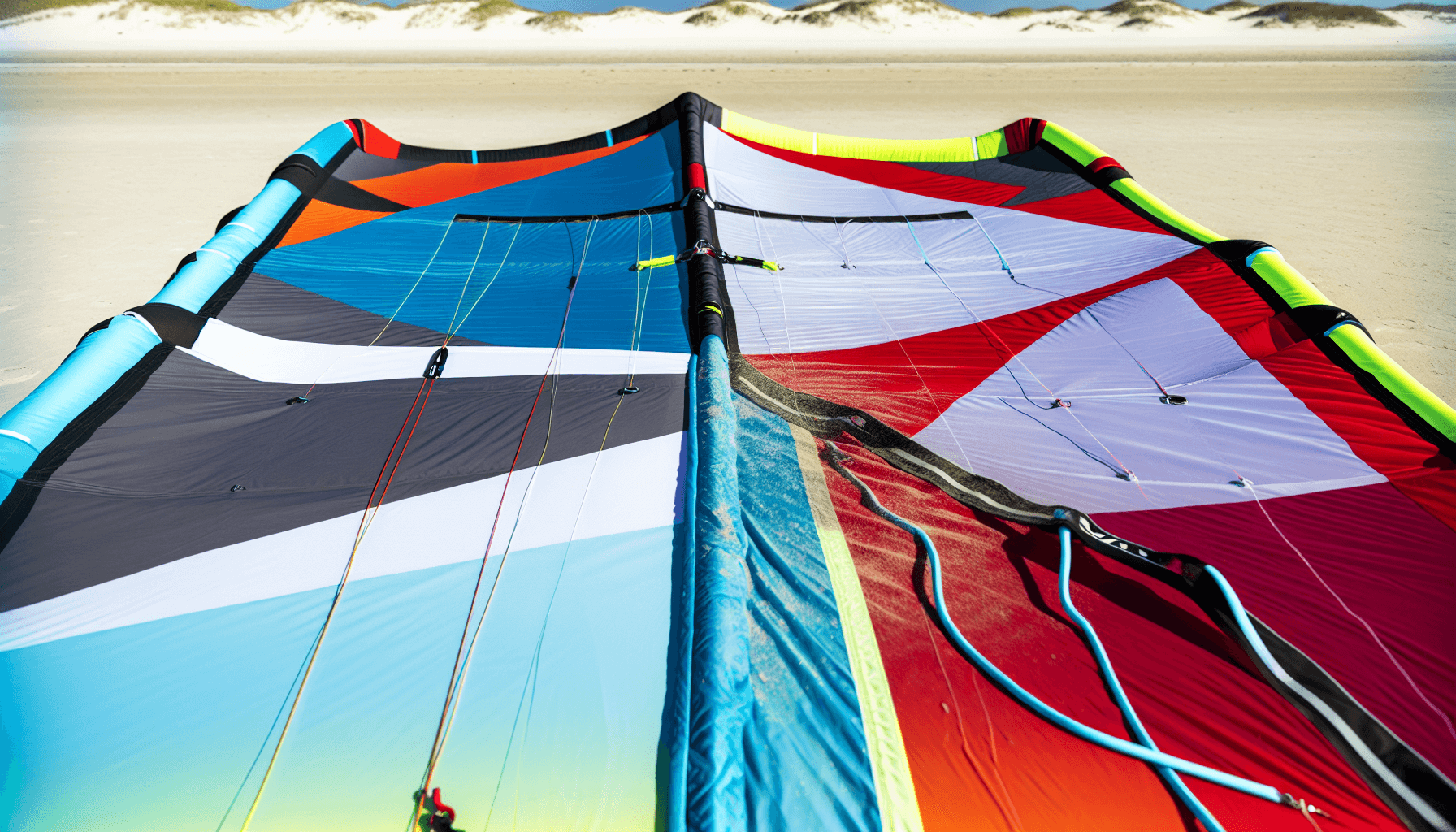
Buying your first kite is an investment. It involves considering new and used kites, sizing, and where to buy them. As a beginner kite first, you may want to consider purchasing a used kite rather than a new one since there is a likelihood of crashing frequently, which can damage the new kite.
New vs. Used Kites
New kites offer several benefits, including:
- Meeting the latest safety standards
- Including lines in perfect condition, crucial for beginner safety
- Guaranteeing the maximum lifespan and freshness of the equipment
- Offering warranties for coverage of manufacturing defects (assuming damage does not result from user negligence)
Used kites are often listed on platforms like eBay and kite forums, providing more budget-friendly options for beginners. However, used kites older than four years are not recommended due to advancements in safety systems that may not be present in older models.
Potential material deterioration and outdated safety features are risks when purchasing kites that are more than 5-6 years old.
Sizing Your Kite
Sizing your kite is like finding the correct shoe size. It needs to match your weight and the prevailing wind conditions. Heavier riders or lighter winds require more giant kites, while lighter riders or stronger winds necessitate smaller kites.
Beginners should start kiteboarding with the giant kite in their set, which facilitates practicing in the most accessible wind conditions. A kite size chart is a helpful tool that accounts for the average rider’s weight and average wind speeds to assist in choosing the suitable kite size for specific conditions.
Where to Buy Your Kite
Trusted sources for buying kites include local kite shops, reputable online stores, and manufacturer websites. Local kite shops often have demo kites or lightly used gear from the previous season, which can be a cost-effective option for beginner kite-boarders seeking quality equipment.
Some manufacturers offer the latest kiteboarding models to consumers via online stores, occasionally providing exclusive special deals or packages.
REAL Kite Shop is an example of a reputable online store offering a comprehensive selection of kiteboarding gear, including:
- kites
- kiteboards
- foils
- bars
- accessories
Caring for Your Kiteboarding Kite
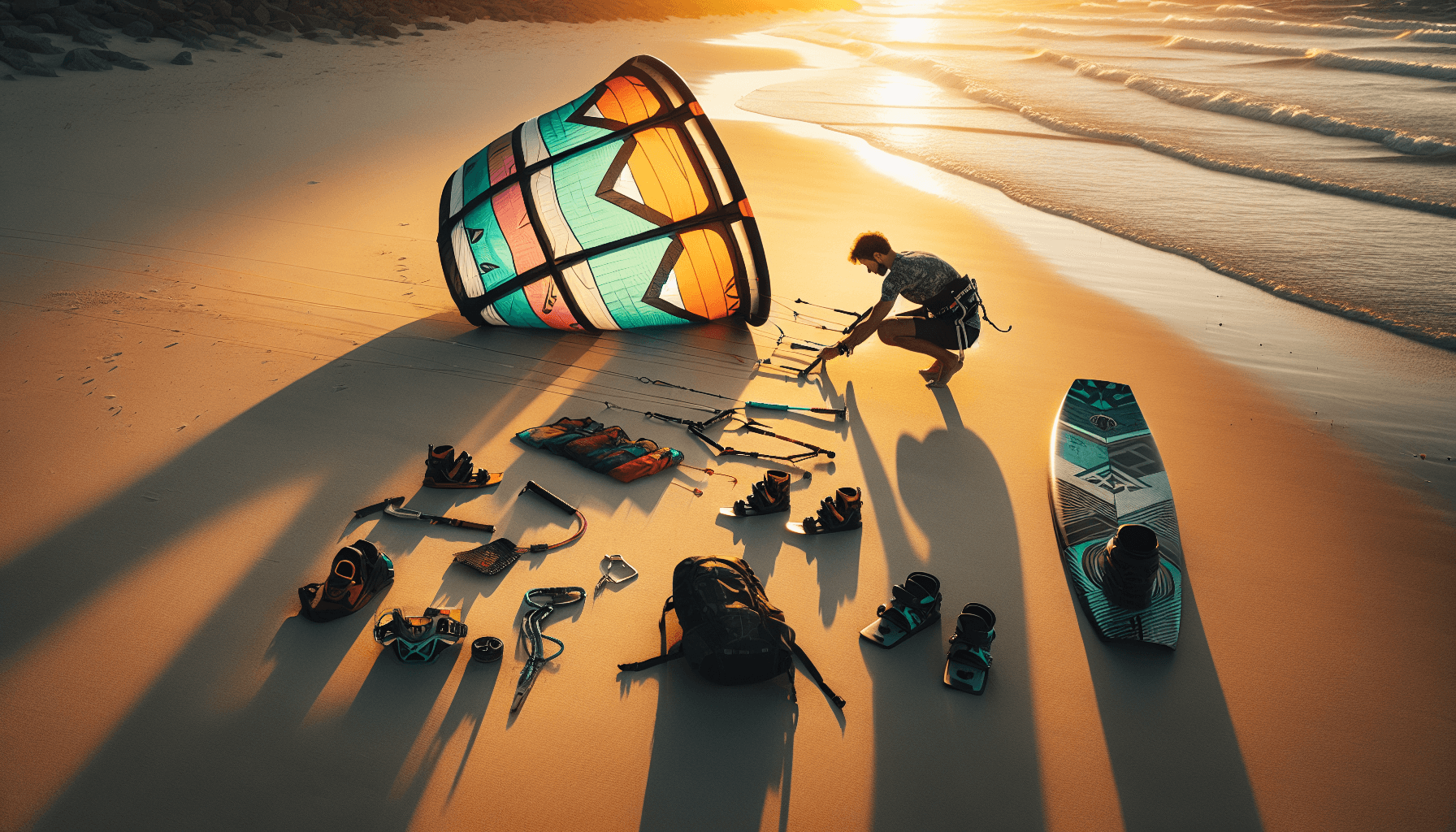
Like other sports equipment, your kite needs regular care to ensure longevity and performance. This involves regular inspections, repairs, and proper storage.
Dry the kite thoroughly before storage to prevent mold and remove salt crystals left by saltwater—store kites and boards in protective bags to reduce travel, sand, and sun damage. Avoid storing kites in areas where they may be exposed to extreme heat or below-freezing temperatures, as this can damage the kite’s valves and material.
Summary
In summary, choosing the right kite isn’t just picking the most colorful one. It’s about understanding your skill level, the best kiteboarding kite’s safety and performance features, and your preferred style of kiteboarding.
From beginner-friendly kites to those built for advanced and experienced riders, there’s one for everyone. Remember, maintaining your kite correctly can extend its lifespan and enhance your overall kiteboarding experience. Happy kiteboarding!
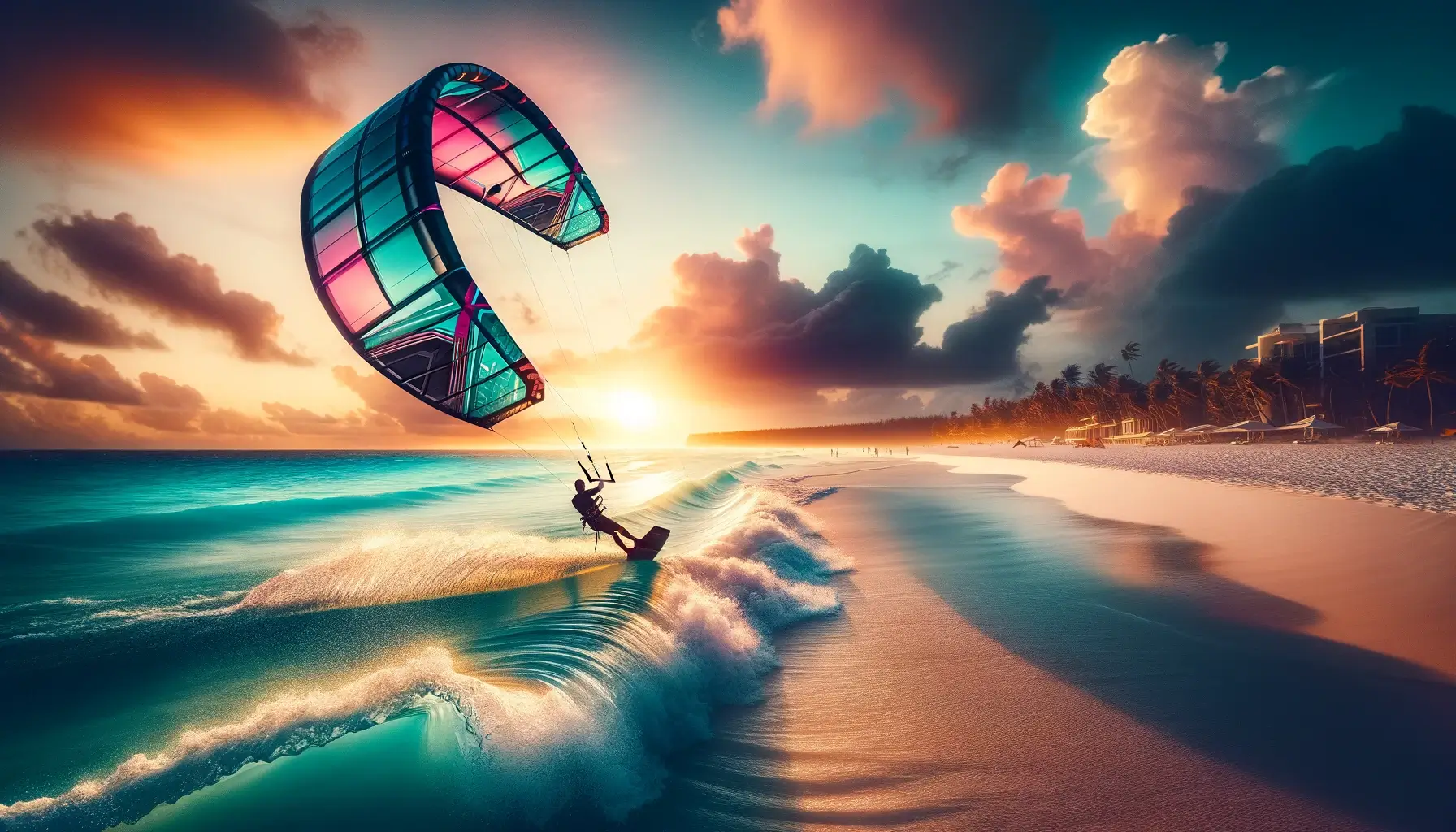
Frequently Asked Questions
How do I choose a kite for kiteboarding?
Choose the right kite size based on the wind conditions: 8-15 knots – go for a 14.5m kite; 12-25 knots – opt for a 10m kite; 20-35 knots – consider an 8m kite; and for winds 30-40+ knots, a 6m kite is suitable.
What is the best kite for solid wind?
The best kite for solid wind is a parafoil kite, made of lightweight ripstop nylon fabric with an air and inflatable structure that is air and gives the shape its aerodynamic shape. It’s stable, highly maneuverable, and can handle the waves and strong winds well.
What is the best type of kite for beginners?
The best type of kite for beginners are single-line options such as delta, diamond, and parafoil kites. They are the easiest to fly and are considered the best type for beginners.
What are the key features to look for in a kiteboarding kite?
When looking for a new kite, prioritize features such as wide wind range, stability, control, and easy relaunch for a better experience on the water.
Should I buy a new or used kiteboarding kite as a beginner?
It would be best to consider purchasing a used kite as a beginner, especially since there’s a likelihood of frequent crashing, which can damage the brand-new kite.

